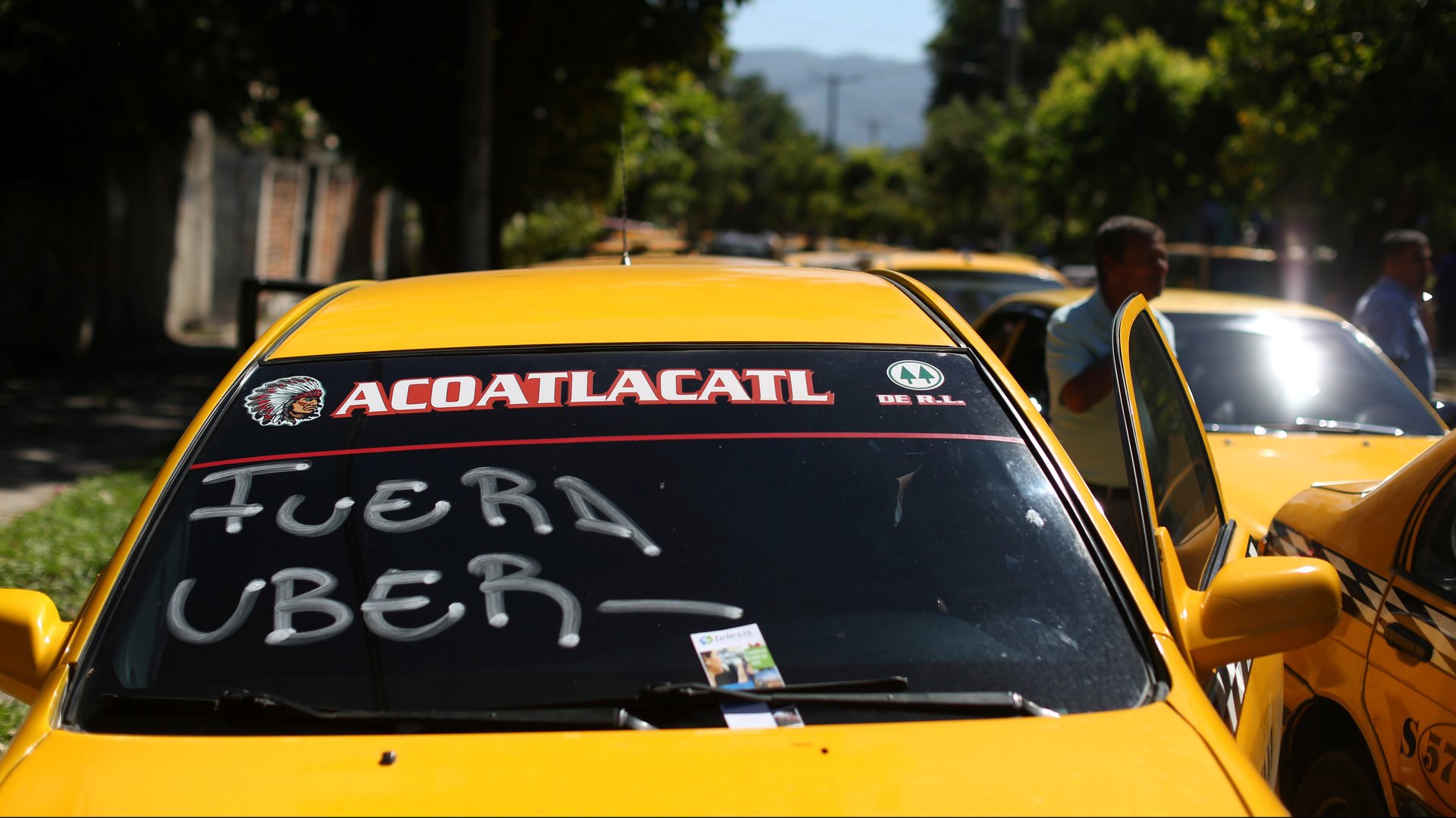Are you a bad person if you still take Uber?
Uber the company may have cratered in 2017, but Uber the service remained as good as ever.


Uber the company may have cratered in 2017, but Uber the service remained as good as ever.
Miraculously, it’s still possible to use Uber’s app without thinking about the problems that consumed its corporate offices and corroded its global reputation this year: the sexual harassment allegations, the feuding board, the disgraced co-founder, the scheming executives, the shameless law-breaking, the competitor surveillance, and the multiple federal investigations.
That’s because when you open the Uber app, you are still greeted by a simple map and a box reading, “Where to?” You still enter your location and, in milliseconds, receive estimates of the price and arrival times for different Uber rides. You can still request a car at the touch of a button, and watch confidently as your assigned driver meanders along nearby roads until arriving at your door.
It’s easy to see why people still want to take Uber, and why plenty of them will be on New Year’s Eve, which is historically Uber’s biggest day of the year. The question is whether you should.
The case for not taking Uber
At the start of this year, half a million people deleted their Uber accounts in one week. The viral backlash—propelled by the hashtag #deleteUber—was prompted by a tweet (what else?) that led people to believe Uber had deliberately broken up an airport protest of Donald Trump’s first “Muslim ban.” The deletions came from disgust, anger, and a need to do something. It turned out the catalyzing tweet was misleading, but the emotions it unleashed were very real. People were instantly ready to believe that Uber, which had a scrappy, combative reputation, was an evil that needed to be removed from their phones.
That was in late January. Uber spent the rest of 2017 proving them right. In February, former Uber engineer Susan Fowler published a blog post detailing a year of harassment and systematic mistreatment at the company. Her account inspired others to share similar stories, leading Uber to conduct multiple internal investigations, dismiss several top executives, and, eventually, force out founder and CEO Travis Kalanick, who had been caught berating an Uber driver on leaked dash-cam footage.
Also this year, Uber was sued for allegedly stealing trade secrets from driverless car maker Waymo. It was caught using special software to evade law enforcement, and had its London license renewal rejected. It courted a multibillion-dollar investment from Japanese tech firm SoftBank and then confessed to having paid off hackers in 2016 to cover up a massive data breach that affected about 57 million riders and drivers. Most recently, it was accused of hacking rivals, surveilling politicians, and impersonating riders and drivers.
Why not take Uber? Because you care about sexism, worker treatment, corporate ethics, the law, or consumer privacy. Any of these would be reason enough to avoid the company, especially when alternatives—namely Lyft, but sometimes other car services like Via or Juno—are so readily available. Moral outrage is a strong motivator, as Uber learned in January, and the company has generated a lot of it in 2017. It should be no surprise if some of that translates into account deletions.
The case for still taking Uber
The case for taking Uber is the same today as it was back in 2009: It’s a simple, fast, convenient service, available at the touch of a button. Maybe you live in a town or city that lacks a good public-transit infrastructure, or you’d rather take Uber than drive a private car. Maybe Lyft isn’t as accessible or has longer wait times, because there are fewer drivers on that platform. Maybe you live in New York and just can’t deal with another day on the rapidly deteriorating subway.
The company’s ethical problems are concerning, but many of its most troublesome executives, including Kalanick, have been removed, and new leadership is being appointed under current CEO Dara Khosrowshahi. After all, every company has problems—especially startups—and you’re confident that Uber’s too will pass.
Then there’s the matter of how Uber treats its drivers. You know it’s not great, but it’s not as though competing services are much better. Before Uber, taxi companies were notoriously terrible employers. Lyft, like Uber, hires its drivers as independent contractors—they don’t get benefits or minimum-wage protection—and has cut their pay to make fares cheaper for riders. The main way that Lyft treated its drivers better than Uber was by allowing tips in its app, and this year, at last, Uber followed suit.
So maybe the real question is whether you want to use ride-hailing at all. But if you do, chances are you’ll just take whichever service offers the lower price at any given moment, since the fares are always changing (thanks, dynamic pricing!) and other differences between Uber and Lyft are slight (they even employ the same drivers). Of course, Uber is about to get another $1 billionish in SoftBank’s multibillion-dollar bid to acquire a stake in the company. If that translates to more discounts for consumers, you might as well take advantage of the free venture capital money as you are conveniently chauffeured to your final judgment day.
This story was updated to clarify the investment SoftBank is making directly into Uber, versus via the purchase of existing shares.